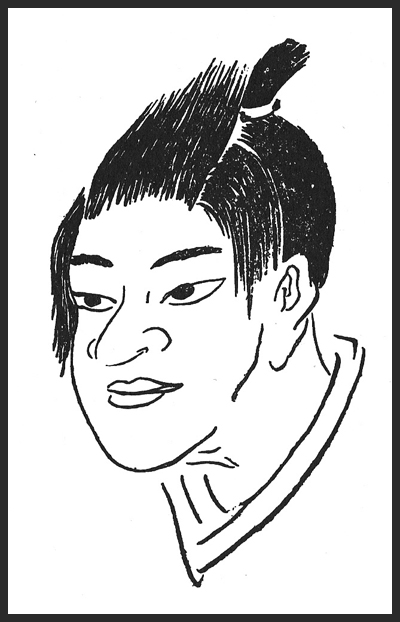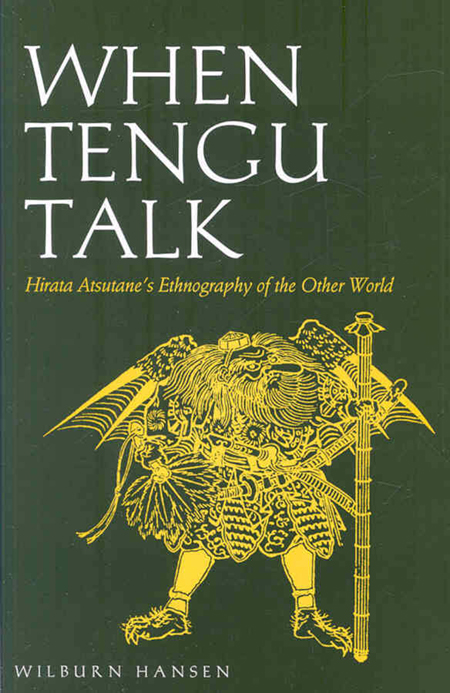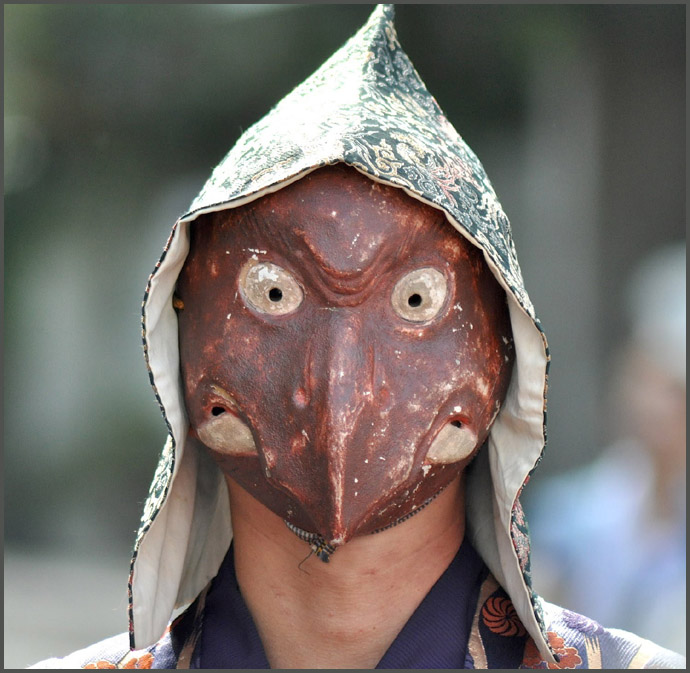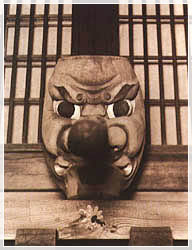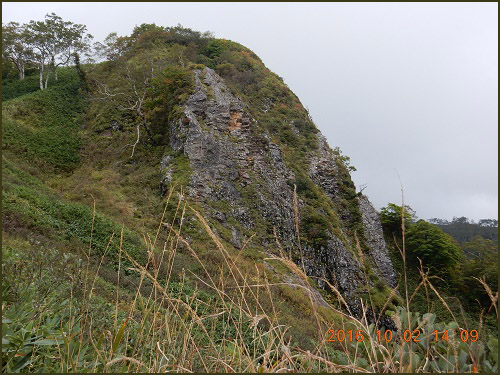- Yōkai 妖怪 Yokai monsters - - ABC-Index -
:::::::::::::::::::::::::::::::::::::::::::::::::::::::::::::::::::::::::::::::::::::::::::::::::::::::::::::::::::::::::::::::::::::::::::::::::::::::::::::::::::::::::::::::::::
raijuu Raijū 雷獣 Raiju Thunder Beast Yokai
. Kaminari Rai 雷 and the Thunder Deities .
- Introduction -
. Raijin 雷神と伝説 Legends about the God of Thunder / ライジン .
A
thunderbolt comes with thunder and lightning. 音と稲妻を伴った雷.
Yakusanoikazuchi 八雷神
Yakusa no ikazuchi no kami
The "eight kinds of thunder kami"
 source : facebook
source : facebook
raisama らいさま "Honorable Thunder Man"
Raichu ポケモン ライチュウ is a manga figure in the Pikachu world and in (Pokémon) Pokemon games.
. . . CLICK here for Photos !
..............................................................................................................................................
tenpi, tenbi, tenka 天火 "fire from heaven"
天火(落雷 rakurai) lightning
hi no tama 火の玉 ball of fire

日本各地に伝わる怪火の一種。江戸時代の奇談集『絵本百物語』や、松浦静山の随筆『甲子夜話』などの古典に記述があるほか、各地の民間伝承としても伝わっている。
Aichi, Saga, Kumamoto with legends
- - - More in the WIKIPEDIA !
Yanagida Kunio 柳田國男 has told a few legends about the 天火.
In Nara this is
. じゃんじゃん火 Janjanbi. .
. kitsunebi 狐火 (きつねび) "fox fire" .
. kaika 怪火 fireball, atmospheric ghost lights yokai from Shiga and Kyoto. .
and Abura-bo 油坊 Oil Priest
..............................................................................................................................................
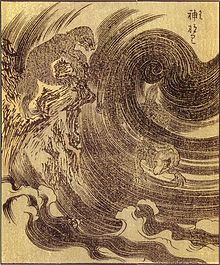
- Look at more photos here :
- reference source : ja.wikipedia.org/wiki -
- quote
Raiju is the companion of Raijin, the Shinto god of lightning.
While the beast is generally calm and harmless, during thunderstorms, it becomes agitated and leaps about in trees, fields, and even buildings (trees that have been struck by lightning are said to have been scratched by Raiju's claws).
Another of Raiju's peculiar behaviors is sleeping in human navels and thus harms the person in whose belly the demon is resting. Superstitious people therefore often sleep on their stomachs during bad weather, but other legends say that Raiju will only hide in the navels of people who sleep outdoors.
Its body is composed of lightning and may be in the shape of a cat, fox, weasel, or wolf. It may also fly about as a ball of lightning (the creature might be an attempt to explain the phenomenon of lightning). It's cry sounds like thunder.
- source : yokai.wikia.com/wiki/Raiju
 CLICK for more photos !
CLICK for more photos !
:::::::::::::::::::::::::::::::::::::::::::::::::::::::::::::::::::::::::::::::::::::::::::::::::::::::::::::::::::::::::::::::::::::::::::::::::::::::::::::::::::::::::::::::::::
. Legends and Tales from Japan 伝説 - Introduction .
............................................................................ Aichi 愛知県
渥美郡
Atsumi district
If people walk around at night, sometimes it is as bright as daylight. They call it
tenbi 天火(てんび) fire from heaven
In 岐阜県 Gifu 揖斐郡 in the Ibi district during summer evenings there is a pillar of light toward heaven.
They call it
tenpi 天火(てんぴ)fire from heaven.
............................................................................ Akita 秋田県
During a thunderstorm, lightning strikes and the Raiju climbs up a tree.
Lightning is also called
tenpi 天火 "fire from heaven".
kutooken 狗頭犬 Kutoken / 狗頭の神. 狗頭の神 Dog-headed Deity
Sometimes on a fine day there is a very sudden thunderbolt and then it is fine again.
Once a tsuki 槻 keyaki tree begun to burn for seven days. When they checked its ashes, the villagers found three bones of a Kutoken yokai dog.
.......................................................................
In a home in Senboku, the Raiju (lightning) stuck a home and it burned for seven days and seven nights.
............................................................................ Gifu 岐阜県
金山町
Kanayama
There was once a schoolteacher with a scar of a burn on her cheek. When she was a child, there was a thunderbolt and the Raiju Yokai got wild and scratched her cheek.
Now the children call her Yuudachi sama 夕立様,
Miss Evening Rain.
Yudachi evening rain often comes with a thunderbolt.
.......................................................................
藤橋村 Fujibashi
Tenpi is the same as
hi no tama 火の玉 "ball of fire".
It raced across the evening sky. Sometimes it makes a big noise.
This only happens in summer.
............................................................................ Fukushima 福島県
浪江町
Namie
At the temple Daishooji 大聖寺
Daisho-Ji
Around 1720 at a small shrine within the temple compound there was a Raiju which could not find its way back to heaven. The priest stuck a long pole in the ground to help it climb up.
When the officials heard the story, they thought the temple must be blessed especially and gave it a lot of land as special reward.
............................................................................ Hyogo 兵庫県
神戸市
Kobe
On the night of the 地蔵盆 Jizo Bon rituals
six or seven friends were standing outside talking, when suddenly a 天火 heavenly fire appeared.
It became all light and when they looked around they saw something like a piece of burning magnesium, which made a sound and climbed from the middle of the fields right up to heaven.
. Jizoo Bon 地蔵盆 Jizo Bon Ritual .
August 24
............................................................................ Ibaraki茨城県
久慈郡
Kuji district
If there is a loud thunder during the nawashiro 苗代 rice nursery season, the Raiju comes down from heaven and destroys the fields. If there is thunder, the villagers walk through the mountains and make noise with bamboo sticks to drive the beast out.
Others place bamboo poles in the rice nurseries. This would help the Raiju to find its way back to heaven before doing harm to the field.
............................................................................ Kanagawa 神奈川県
三浦市
Miura
Kaminari is called オカンダチ
Okandachi in the local dialect.
If a tree is struck by lightning and shows a scar from it, they say its was the nail of the Raiju Yokai, which tried to climb up the tree to reach the sky.
............................................................................ Kumamoto 熊本県
The Raiju is almost as large as a paper lantern and has a tail. If it falls from the sky on a roof, there will be a fire.
.......................................................................
玉名郡
Tamana district
Tenbi is a Yokai light. Some come with a tail of fire.
If it is seen, this may be the forboding of more desaster.
.......................................................................
天草諸島
Amakusa islands
A man from 鬼池村 Oniike village went out fishing, but the villagers did not like him, treated him badly and eventually he died.
Since then, every night there was a ball of fire flying over the 鬼池 Oni-Ike "Demon pond" .
Once the fire fell into the shrubs and it begun to burn, in fact, the whole village bunrnt down. The villagers thought this must have been a curse of the fisherman.
So they built a statue of 地蔵尊 Jizo Bosatsu on the place where he died and prayed for his soul, expecially on winter nights.
............................................................................ Mie 三重県
Old records tell of a Raiju being caught. On a painting it looks similar to a tanuki 狸 badger. But someone else caught one too and said it looked quite different.
............................................................................ Nagano 長野県
On 加賀国の白山
Mount Hakusan of the Kaga domain and on 信濃国の浅間山
Mount Asama of the Shinano domain there live Raiju. They look a bit like a fox. When they get caught, people bring them to Kyoto or Osaka to show for money. They place them in a net of iron and do not give them anything to eat or drink. When there seems to come an evening shower, the hair of the Yokai begin to stand on edge and their owners place a straw mat over the iron net.
There is also a powerful bird
kaminari no tori 雷の鳥 Thunder Bird
which eats the Raiju. Many of these birds live on Mount Hakusan.
. Asama yama, Asamayama 浅間山 Mount Asama .
active volcano in Nagano and Gunma
.......................................................................
茅野市
Chino
In a cave in the middle of the mountain lives the 雷獣 Raiju, venerated as
Raijin 雷神 the Deity of Thunder.
Near the hole there is a lot of white hair, almost like that of a cat.
This Deity has the form of a small dog and others say the hair looks like that of a tanuki 狢 badger. The space around his eyes is black, the nose long and small and its tail short.
The skin on the soles of his feet is soft like that of a child and it has five legs.
In winter it digs a hole and sleeps.
It is usually quite gentle and likes humans, but when it rains, it becomes wild.
.......................................................................
Once in a year with very strong rain two beasts came floating down the river, quite dead.
Their eyes were large like that of a dog, their fur ashen and the head long. The tail looked like that of a fox and the nails like that of a hawk.
............................................................................ Okayama 岡山県
浅口郡 Asakuchi district, 里庄町
Satosho
Once there was a thunderbolt at 虚空蔵山 Mount Kokuzo-Yama. But Kokuzo Bosatsu caught the Yokai and told him "If you do that once again at this place, I will not let you go unpunished!"
Since that time, there has not been a thunderbolt any more.
The villagers were very pleased about it and now have a festival every year on January 13.
In other parts they also know that if you venerate Kokuzo Bosatsu, there will be no thunderbolt.
. Kokuuzoo, Kokūzō 虚空蔵菩薩 Kokuzo Bosatsu .
Akashagarbha Bodhisattva
............................................................................ Saga 佐賀県
東松浦郡
Higashimatsuura district
In the Sage region, the 天火 Tenpi is called
hi no tama 火の玉
ball of fire.
This ball with a long tail flies slanting, trying to hide. But it is said to cause fires and if people see it, they use drums and ritual bells to drive it away.
If the 天火 Tenpi enters a home, someone will become ill. So they drive it away with drums and ritual bells. Sometimes even the weather improves after this.
............................................................................ Saitama 埼玉県
On the land of the Nagai family in 岩槻 Iwaki the Raiju came down, run around in the fields, but the villagers got hold of him. It did not eat anything and died soon in his capture. So they took the carcass and stuffed it. It looked like a small dog, with sharp nails like a bear.
............................................................................ Shiga 滋賀県
甲賀郡
Koka district
aburabi (aburahi) 油火 "oil fire"
At mount 油日岳 Aburahidake (694m)
. Aburahi Jinja 油日神社 Aburahi Shrine, Shiga .
............................................................................ Shimane 島根県
邑智郡 Ochi district, 瑞穂町
Mizuho
When a thunderbold comes dow, its like the Raiju scratching a tree and the scars of its claws can be seen on the tree bark. Some villagers even say they have seen the Raiju run up a tree after lightning has stuck it.
............................................................................ Tochigi 栃木県
At 烏山
Mount Karasuyama there lived a strange beast, a Raiju. It looked like a mouse but was about as big as a weasel. During summer there were often holes in the mountain and this beast showed its head. When it saw a suitable cloud, this Raiju jumped on it and made its way to heaven.
Sometimes hunters went after this creature in spring, but never caught it.
............................................................................ Tokushima 徳島県
During the Edo period there had been a thunderbolt hitting a boat on the sea. After that they found a strange beast like an otter on the boat.
Since it was such an unusual being, they thought it might be a Raiju Yokai and they put the creature in a 見世物 curiosity show.
. kawauso 獺魚 otter, river otter .
............................................................................ Tokyo 東京都
The Raiju does not like rakuda 駱駝 camels, therefore to prevent a thunder and lightning from hitting, people post the image of a camel on their entrance of the home.
.......................................................................
Edo no Nana Fushigi 江戸の七不思議 Seven Wonders of Edo
In the year 1799, a Raiju was caught in Edo !
This was one of the Seven Wonders at that time.
. Edo Nana Fushigi 江戸七不思議 The Seven Wonders of Edo .
............................................................................ Wakayama 和歌山県
本宮町
Hongu
yabi 矢火 "fire arrow"
A "fire arrow" is read. The red light is not a heavenly sign of something unusual to come. If the light has a bluish tail as it flows over the river, and looks like a ball of fire, then someone in the village has died.
Sometimes it takes time after someone watched a bluish ball of light until the news of a death is given.
..............................................................................................................................................
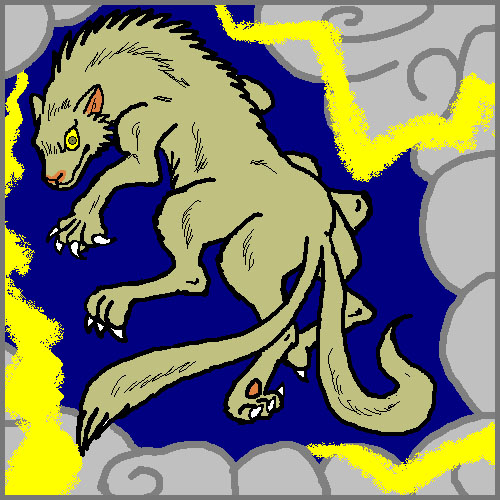 CLICK for more photos !
- reference : nichibun yokai database 妖怪データベース -
- reference : raiju thunder -
CLICK for more photos !
- reference : nichibun yokai database 妖怪データベース -
- reference : raiju thunder -
:::::::::::::::::::::::::::::::::::::::::::::::::::::::::::::::::::::::::::::::::::::::::::::::::::::::::::::::::::::::::::::::::::::::::::::::::::::::::::::::::::::::::::::::::::
乱世に似て雷獣の跳梁す
雷獣もその獣性に駈らるらし
相生垣瓜人 Aiaigaki Kajin (1898 - 1985)
:::::::::::::::::::::::::::::::::::::::::::::::::::::::::::::::::::::::::::::::::::::::::::::::::::::::::::::::::::::::::::::::::::::::::::::::::::::::::::::::::::::::::::::::::::
 . - - - Join my Yokai friends on facebook ! - - - .
. - - - Join my Yokai friends on facebook ! - - - .
:::::::::::::::::::::::::::::::::::::::::::::::::::::::::::::::::::::::::::::::::::::::::::::::::::::::::::::::::::::::::::::::::::::::::::::::::::::::::::::::::::::::::::::::::::
- Yōkai 妖怪 Yokai monsters - - ABC-Index -
. - yookai, yōkai 妖怪 Yokai monsters - .
- Reference -
. Legends and Tales from Japan 伝説 - Introduction .
. Kappa densetsu 河童伝説, Kappa minwa 河童民話 - Legends - Introduction .
. Tengupedia - 天狗ペディア - Tengu ABC-List .
. Mingei 民芸 Regional Folk Art from Japan .
- #raiju #thunderyokai -
:::::::::::::::::::::::::::::::::::::::::::::::::::::::::::::::::::::::::::::::::::::::::::::::::::::::::::::::::::::::::::::::::::::::::::::::::::::::::::::::::::::::::::::::::::
[ . BACK to DARUMA MUSEUM TOP . ]
[ . BACK to WORLDKIGO . TOP . ]
::::::::::::::::::::::::::::::::::::::::::::::::::::::::::::::::::::::::::::::::::::::::::::::::::::::::::::::::::::::::::::::::::::::::::::::::::::::::::::::::::::::::::::::::::





